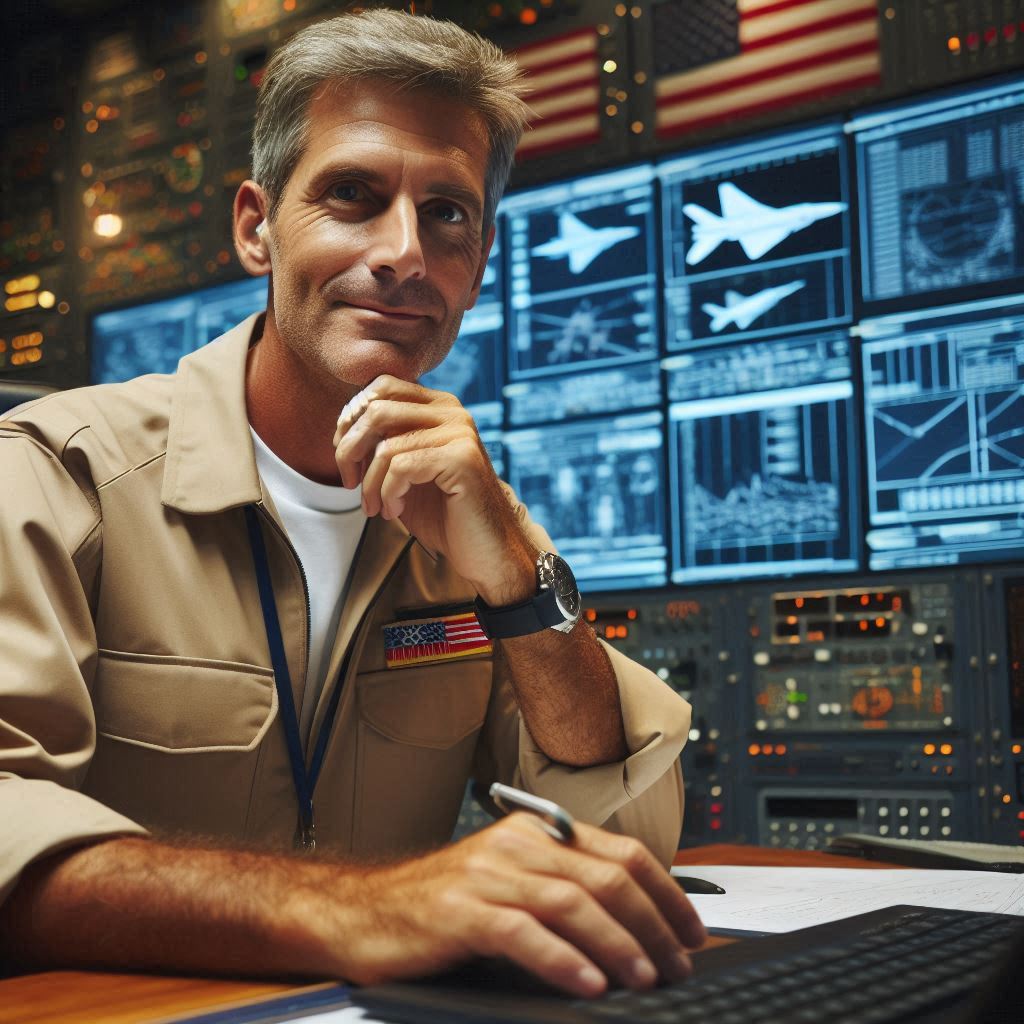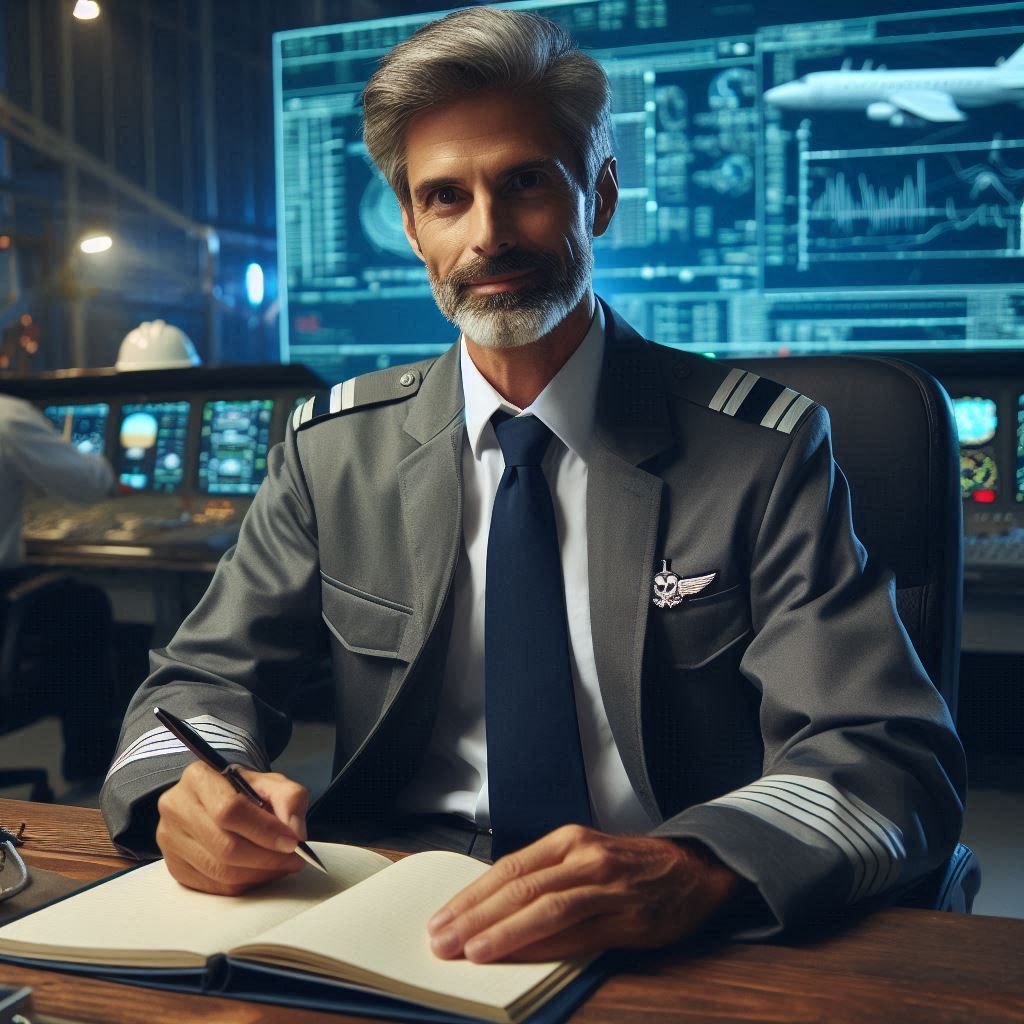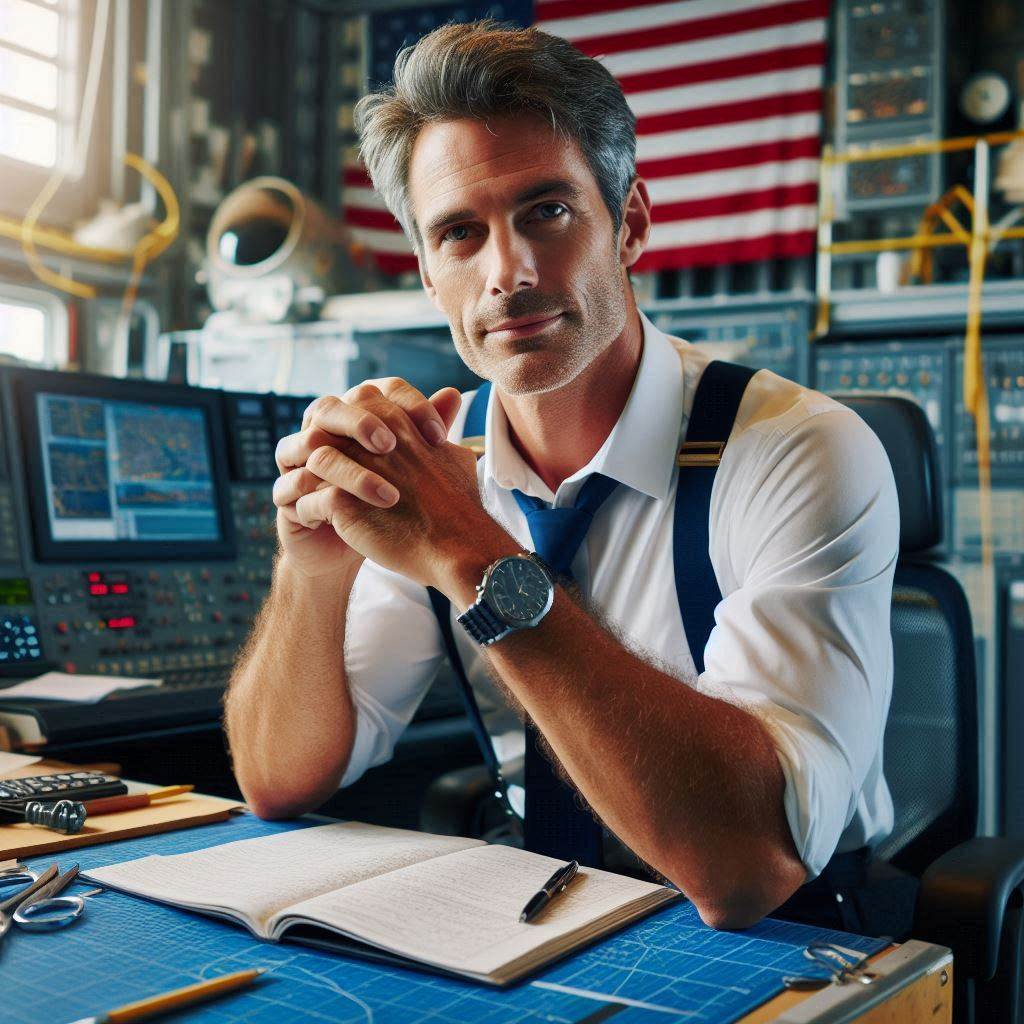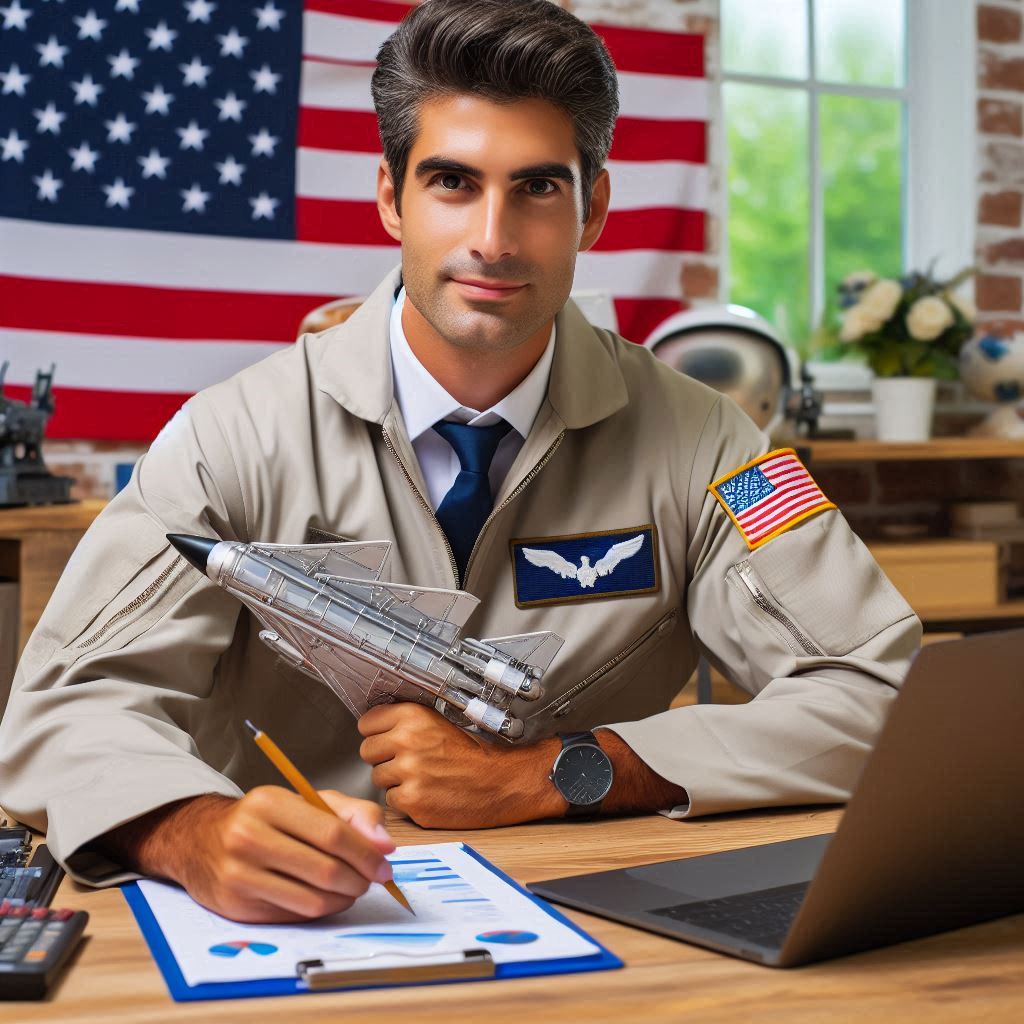Introduction
Aerospace engineering is a specialized field that focuses on the design, development, and maintenance of aircraft and spacecraft.
It involves applying engineering principles to solve complex problems related to flight and space travel.
Aerospace engineers are instrumental in advancing technology in both the aviation and space industries.
In aviation, aerospace engineers are responsible for designing and improving aircraft.
They work on commercial jets, military planes, and private aircraft, focusing on enhancing safety, fuel efficiency, and overall performance.
Their work involves rigorous testing and analysis to ensure that aircraft meet stringent safety standards and regulatory requirements.
In the space industry, aerospace engineers develop spacecraft and related technologies for exploration beyond Earth.
They design satellites, space probes, and crewed spacecraft, ensuring they can withstand the harsh conditions of space.
Their innovations contribute to space missions, satellite communications, and space exploration efforts.
This blog post aims to delve into the role of aerospace engineers, exploring their daily tasks and responsibilities.
It will highlight their impact on technological advancements and industry progress.
By understanding what aerospace engineers do, readers can appreciate their vital contributions to both aviation and space exploration.
The significant challenges they tackle to drive innovation and ensure success in these high-stakes fields.
Education and Training of Aerospace Engineers
Educational requirements (Bachelor’s degree in aerospace engineering or related field)
Aerospace engineers typically need a Bachelor‘s degree in aerospace engineering or a closely related field.
This degree offers a comprehensive foundation in core aerospace principles.
Students learn about aerodynamics, which involves the study of how air interacts with solid objects like aircraft and rockets.
They also study propulsion systems that power aircraft and spacecraft.
The curriculum includes materials science to understand the properties of materials used in aerospace structures.
Structural analysis is taught to ensure that aircraft and spacecraft can withstand various forces.
Additionally, control systems courses cover the technology used to maintain stability and direction.
Many programs incorporate hands-on experience through lab work, internships, and design projects,
Which are crucial for practical application of theoretical knowledge.
Completing an accredited engineering program ensures that graduates are well-prepared to design, test, and improve aerospace systems.
Additional certifications or licenses required
After obtaining a Bachelor‘s degree, aerospace engineers may pursue additional certifications or licenses to enhance their careers.
Certification from professional organizations, such as the American Institute of Aeronautics and Astronautics (AIAA).
Demonstrate advanced expertise and commitment to the field.
For those involved in designing or overseeing complex aerospace systems, obtaining a Professional Engineer (PE) license may be beneficial.
The PE license requires passing a comprehensive exam and fulfilling work experience requirements.
Specific projects or roles may also necessitate security clearances or other specialized licenses, especially in defense or space missions.
These credentials not only boost career prospects but also ensure adherence to industry standards and regulations.
Importance of continuing education in this field
Continuing education is essential for aerospace engineers due to the field‘s rapid technological advancements.
Aerospace technology evolves quickly, with new materials, methods, and innovations emerging regularly.
Engineers must stay updated on the latest trends, tools, and research to remain effective and competitive.
Advanced courses, workshops, seminars, and professional conferences offer opportunities to learn about new developments.
Many engineers also pursue advanced degrees, such as a Master‘s or Ph.D., to specialize in emerging areas like space exploration or unmanned aerial systems.
Engaging in continuing education helps engineers adapt to industry changes, solve new problems, and leverage the latest technologies.
It also provides avenues for career advancement and specialization, allowing engineers to explore new roles and responsibilities.
Integration of Continuing Education with Professional Development
Integrating continuing education with professional development activities enhances an aerospace engineer‘s career trajectory.
Networking at industry conferences, participating in technical forums, and contributing to research publications are valuable for career growth.
Professional development programs often include leadership training, other competencies crucial for advancing to higher positions.
By combining technical knowledge with these skills, engineers are better equipped for leadership roles and complex projects.
Generally, a Bachelor‘s degree in aerospace engineering or a related field is fundamental for starting a career in aerospace engineering.
Additional certifications and licenses can further validate expertise and open up specialized opportunities.
Continuing education is vital to keep pace with technological advancements and industry trends.
By investing in ongoing learning and professional development, aerospace engineers ensure their skills remain cutting-edge and relevant.
Contributing significantly to the field‘s advancement and innovation.
Job Responsibilities of an Aerospace Engineer
Aerospace engineers play a crucial role in the design, development, testing, and production of aircraft, spacecraft, satellites, and missiles.
Their job responsibilities are varied and demanding, requiring a high level of technical knowledge and skill.
Let’s delve deeper into some of the key duties performed by aerospace engineers:
Designing Aircraft, Spacecraft, Satellites, and Missiles
One of the primary responsibilities of an aerospace engineer is to design various aerospace vehicles such as aircraft, spacecraft, satellites, and missiles.
This involves creating detailed plans, drawings, and specifications that outline the structural, aerodynamic, and propulsion systems of these vehicles.
Aerospace engineers must consider factors such as weight, fuel efficiency, and materials to ensure the optimal performance and safety of the final product.
Testing Prototypes and Analyzing Data
Once the initial designs are complete, aerospace engineers must oversee the testing of prototypes to evaluate their performance and functionality.
This testing phase involves conducting various experiments and simulations to gather data on how the vehicles behave in different conditions.
Aerospace engineers analyze this data to identify any issues or areas for improvement in the design.
They may need to make adjustments to the prototypes to enhance their performance and safety.
Collaborating with Other Engineers and Professionals
Aerospace engineers often work as part of a multidisciplinary team that includes other engineers, scientists, technicians, and project managers.
Collaboration is essential in the aerospace industry as projects are complex and require expertise in various areas.
Aerospace engineers must communicate effectively with their team members, share information, and work together to solve problems and meet project deadlines.
By collaborating with others, aerospace engineers can leverage the diverse skills and knowledge of the team to achieve successful outcomes.
Overall, the job responsibilities of an aerospace engineer are challenging and rewarding.
These professionals are at the forefront of technological advancements in the aerospace industry.
Pushing the boundaries of what is possible in aviation and space exploration.
By designing innovative vehicles, testing prototypes, and collaborating with other expert.
Aerospace engineers play a crucial role in shaping the future of aerospace technology.
Skills and Qualities Needed for Success
In order to be successful in the field of aerospace engineering, there are certain skills and qualities that are essential for an individual to possess.
These skills and qualities play a crucial role in ensuring that projects are completed efficiently and effectively.
Strong analytical and problem-solving skills
Aerospace engineers rely heavily on strong analytical and problem-solving skills.
They use these abilities to address complex challenges in aircraft and spacecraft design.
Engineers analyze data, simulate performance, and solve engineering problems to improve safety and efficiency.
For example, they might troubleshoot issues with propulsion systems or aerodynamic performance.
These skills enable engineers to develop innovative solutions and refine designs.
Analytical thinking helps engineers assess the impact of design changes and ensure all systems function correctly.
Effective problem-solving also involves using mathematical models and simulations to predict and optimize performance.
Overall, strong analytical skills are crucial for addressing the sophisticated challenges in aerospace engineering.
Attention to detail and precision in design work
Attention to detail and precision are vital in aerospace engineering.
Engineers work with intricate designs that require exact measurements and specifications.
They must ensure that every component of an aircraft or spacecraft meets rigorous standards.
Precision in design affects performance, safety, and reliability.
For instance, slight deviations in dimensions can impact the aerodynamics of an aircraft or the structural integrity of a spacecraft.
Engineers use advanced tools and technologies to maintain accuracy throughout the design process.
They also perform detailed inspections and testing to verify that all parts function as intended.
Attention to detail ensures that every aspect of the design is thoroughly vetted and optimized.
Ability to work in a team and communicate effectively
Working in a team and communicating effectively are essential skills for aerospace engineers.
Aerospace projects often involve multidisciplinary teams that include engineers, designers, and technicians.
Effective collaboration ensures that all aspects of the project are integrated seamlessly.
Engineers must communicate technical information clearly to team members and stakeholders.
This includes writing reports, giving presentations, and participating in meetings.
Strong communication skills help in coordinating efforts, resolving issues, and sharing updates.
Teamwork is crucial in managing complex projects where diverse expertise is needed.
Engineers must be able to work harmoniously with others, adapting to various roles and responsibilities.
Effective communication and teamwork drive the successful completion of aerospace projects.
In summary, aerospace engineers must possess strong analytical and problem-solving skills, attention to detail, and the ability to work in teams.
These skills are fundamental to addressing the complexities of aerospace design and ensuring that systems operate safely and efficiently.
Analytical abilities help engineers tackle complex challenges, while precision ensures the accuracy of designs.
Effective teamwork and communication facilitate collaboration and project success.
Together, these skills enable aerospace engineers to innovate and advance technology in the aerospace industry.
Read: How to Become a Civil Rights Advocate
Career Opportunities for Aerospace Engineers
As an aerospace engineer, there are various career opportunities available in the industry.
Whether you choose to work for a private aerospace company, a government agency, or a research institution.
There are plenty of paths you can take to build a successful career.
Working for Aerospace Companies, Government Agencies, or Research Institutions
One of the most common career paths for aerospace engineers is to work for aerospace companies.
These companies design, manufacture, and test aircraft, satellites, and spacecraft.
Working for a private aerospace company can be very rewarding as you will get the chance to work on cutting-edge technology and be part of groundbreaking projects.
Another option for aerospace engineers is to work for government agencies such as NASA or the Department of Defense.
Government agencies play a crucial role in the aerospace industry by funding research and development projects.
Well as overseeing regulations and safety standards.
Working for a government agency can provide stability and the opportunity to work on projects that have a significant impact on society.
Research institutions, such as universities or think tanks, are also great places for aerospace engineers to work.
These institutions often conduct cutting-edge research that pushes the boundaries of what is possible in aerospace technology.
Working at a research institution can allow aerospace engineers to explore new ideas and innovate in their field.
Specializing in Areas such as Aerodynamics, Propulsion, or Structures
Within the field of aerospace engineering, there are many specialized areas that engineers can choose to focus on.
Some engineers may choose to specialize in aerodynamics, which involves studying the flow of air around objects like aircraft wings.
Aerodynamic specialists work on designing more efficient and stable aircraft by optimizing the shape and structure of aircraft components.
Others may choose to specialize in propulsion, which involves developing engines and propulsion systems for aircraft and spacecraft.
Propulsion specialists work on improving fuel efficiency, increasing thrust, and reducing emissions.
They are at the forefront of developing new propulsion technologies that will power the next generation of aircraft and spacecraft.
Another area of specialization for aerospace engineers is structures.
Structural engineers design and analyze the components of aircraft and spacecraft to ensure they can withstand the forces of flight.
They work on designing lightweight yet strong materials to build aircraft and spacecraft that are safe and efficient.
Structural engineers play a critical role in ensuring the safety and reliability of aerospace vehicles.
Potential for Advancement to Leadership or Management Positions
Aerospace engineers have the potential to advance to leadership or management positions within their organizations.
With experience and expertise, aerospace engineers can move into roles such as project manager, team leader, or department head.
In these positions, engineers are responsible for overseeing projects, leading teams, and making strategic decisions that impact the success of the organization.
Leadership and management positions allow aerospace engineers to take on more responsibilities and influence the direction of projects and initiatives.
They are tasked with guiding teams towards achieving goals, managing resources effectively, and ensuring projects are completed on time and within budget.
Aerospace engineers who excel in leadership roles can have a significant impact on the success of their organizations and the aerospace industry as a whole.
In general, aerospace engineers have a wide range of career opportunities available to them.
Whether they choose to work for aerospace companies, government agencies, or research institutions.
There are plenty of paths to build a successful career in the industry.
By specializing in areas such as aerodynamics, propulsion, or structures.
Aerospace engineers can further develop their expertise and make a significant contribution to the field.
With the potential for advancement to leadership or management positions.
Aerospace engineers can take on greater responsibilities and have a lasting impact on the aerospace industry.
Read: Economic Indicators and Their Influence on US Architects
Transform Your Career Today
Unlock a personalized career strategy that drives real results. Get tailored advice and a roadmap designed just for you.
Start Now
Day-to-Day Tasks of an Aerospace Engineer
Conducting research and analysis to develop new technologies
Aerospace engineers play a pivotal role in advancing technology by conducting research and analysis.
They start by identifying areas where new technologies can improve aircraft and spacecraft performance.
Through extensive research, they explore cutting-edge materials, propulsion systems, and aerodynamic designs.
Engineers analyze data from simulations and experiments to assess feasibility and performance.
This rigorous analysis helps in developing innovative solutions that push the boundaries of aerospace technology.
By staying abreast of the latest scientific advancements, aerospace engineers ensure that their designs incorporate the most recent technological breakthroughs.
Their work lays the groundwork for creating safer, more efficient, and more advanced aerospace systems.
Participating in meetings and discussions with colleagues and clients
Collaboration is key in aerospace engineering.
Engineers regularly participate in meetings and discussions with colleagues and clients to align on project goals.
These meetings involve sharing research findings, design proposals, and technical challenges.
Engineers collaborate with multidisciplinary teams, including scientists, designers, and manufacturing experts, to integrate various aspects of the project.
They also engage with clients to understand their requirements and expectations.
Clear communication during these discussions ensures that all stakeholders are on the same page.
By exchanging ideas and feedback, engineers refine their designs and address any potential issues early in the development process.
This collaborative approach enhances project efficiency and effectiveness.
Writing reports and documenting design processes
Accurate documentation is essential in aerospace engineering.
Engineers write detailed reports to document their design processes and research findings.
These reports include technical specifications, design calculations, and test results.
Comprehensive documentation ensures that all aspects of the project are recorded and can be reviewed by others.
Engineers also create detailed design blueprints and technical drawings to guide the manufacturing process.
Proper documentation is crucial for maintaining quality control and compliance with industry standards.
It also provides a reference for future projects and helps in troubleshooting any issues that may arise.
Effective reporting and documentation contribute to the overall success and reliability of aerospace projects.
Therefore, aerospace engineers conduct research and analysis to push the boundaries of technology.
They participate in collaborative meetings with colleagues and clients to ensure alignment and effectiveness.
Writing detailed reports and documenting design processes are crucial for maintaining accuracy and quality.
Through these activities, aerospace engineers drive innovation, enhance project outcomes, and contribute to the advancement of aerospace technology.
Their work involves a blend of technical expertise, collaboration, and meticulous documentation, all essential for developing cutting-edge aerospace systems.
Read: Post-Pandemic Design Trends: US Architects Adapt
See Related Content: Certifications for Aerospace Engineers
Challenges Faced by Aerospace Engineers
Aerospace engineers face a multitude of challenges in their daily work, ranging from technical difficulties to project management hurdles.
Let’s delve into some of the key challenges faced by these professionals.
Meeting strict safety and performance standards in design
One of the primary responsibilities of aerospace engineers is to ensure that aircraft and spacecraft designs meet stringent safety and performance standards.
This requires meticulous attention to detail and a deep understanding of the principles of aerodynamics, materials science, and structural mechanics.
Achieving this goal involves careful analysis, simulation, and testing of various components and systems to identify potential weaknesses and failure points.
Engineers must also consider factors such as environmental conditions, operational requirements, and regulatory mandates when designing aerospace vehicles.
Keeping up with rapidly evolving technology and regulations
The aerospace industry is characterized by constant technological advancements and evolving regulations, presenting a significant challenge for engineers.
As new technologies emerge and regulations change, engineers must stay informed and adapt their practices accordingly to remain competitive and compliant.
This requires ongoing professional development, continuous learning.
Collaboration with colleagues and industry experts to stay abreast of the latest trends and developments.
Aerospace engineers must also be proactive in seeking out training opportunities and certifications to enhance their skills and knowledge.
Balancing project deadlines and budget constraints
In addition to technical challenges, aerospace engineers must also grapple with project management issues, such as tight deadlines and budget limitations.
Meeting project milestones and delivering quality work within the allocated budget is a constant juggling act that demands effective planning and resource allocation.
Engineers must be adept at prioritizing tasks, managing time efficiently, and resolving conflicts to ensure that projects are completed on time and within budget.
This requires strong communication skills, problem-solving abilities, and a keen eye for detail to navigate the complexities of aerospace projects successfully.
Most Importantly, aerospace engineers face a myriad of challenges in their profession.
From ensuring safety and performance compliance to adapting to technology advancements and managing project constraints.
By overcoming these challenges with resilience, creativity, and determination.
Aerospace engineers play a vital role in advancing the aerospace industry and shaping the future of flight.
Read: The Intersection: Architecture & Tech in Modern USA.
Find Out More: Chemical Engineering Specializations Explained
Impact of Aerospace Engineers on Society
When it comes to the contributions of aerospace engineers to society, their impact is vast and far-reaching.
Let’s delve into some key areas where aerospace engineers have made a significant difference:
Contributions to advancements in aviation and space exploration
Aerospace engineers play a crucial role in advancing both aviation and space exploration.
They design and develop innovative aircraft and spacecraft that push the boundaries of current technology.
For aviation, engineers work on improving aircraft performance, fuel efficiency, and environmental impact.
They develop advanced propulsion systems and aerodynamics to enhance flight capabilities.
In space exploration, aerospace engineers contribute to the design of spacecraft, satellites, and space stations.
They work on missions to explore distant planets, study space phenomena, and enable human space travel.
Their contributions drive significant technological advancements and expand our understanding of the universe.
Improving safety and efficiency in air travel and satellite communication
Aerospace engineers are dedicated to improving safety and efficiency in air travel and satellite communication.
They develop systems to enhance flight safety, such as advanced avionics, collision avoidance systems, and improved navigation technologies.
These innovations help prevent accidents and ensure smoother, more reliable air travel.
In satellite communication, engineers work on enhancing signal transmission, reducing interference, and increasing data bandwidth.
They develop technologies to improve satellite accuracy and reliability, which is crucial for global communications, weather forecasting, and navigation systems.
By addressing safety and efficiency, aerospace engineers contribute to safer skies and more effective satellite operations.
Inspiring future generations of engineers and innovators
Aerospace engineers inspire future generations through their groundbreaking work and achievements.
Their involvement in high-profile projects, such as space missions and cutting-edge aircraft designs.
Captivates young minds and fuels their interest in engineering and science.
By sharing their experiences and knowledge, aerospace engineers serve as role models for aspiring students.
They participate in outreach programs, educational workshops, and mentoring initiatives to encourage the next generation of engineers.
Their work not only advances technology but also sparks curiosity and innovation.
Motivating young people to pursue careers in engineering and contribute to future technological breakthroughs.
Integration of Advancements with Educational Outreach
Integrating advancements in aerospace with educational outreach amplifies the impact on future generations.
Aerospace engineers often collaborate with schools and universities to develop STEM programs and interactive learning experiences.
These initiatives provide students with hands-on opportunities to explore aerospace concepts and technologies.
Engaging in community events and educational forums helps bridge the gap between professional achievements and academic interest.
Fostering a greater appreciation for engineering and inspiring the next wave of innovators.
Essentially, aerospace engineers significantly contribute to advancements in aviation and space exploration by developing cutting-edge technologies and improving safety and efficiency.
Their work enhances air travel and satellite communication, making them crucial to modern technological progress.
By inspiring future generations through educational outreach and public engagement, aerospace engineers help shape the future of engineering and innovation.
Their dedication to pushing boundaries and solving complex challenges continues to drive progress and inspire the next generation of engineers.
Transform Your Career Today
Unlock a personalized career strategy that drives real results. Get tailored advice and a roadmap designed just for you.
Start NowConclusion
Aerospace engineers play a pivotal role in both the aviation and space industries.
They are responsible for the design, development, testing, and maintenance of aircraft and spacecraft, efficient, and capable of performing their intended functions.
Their work drives technological advancements and propels innovation, making air travel safer and space exploration more accessible.
The challenges in aerospace engineering are significant, encompassing complex technical problems, and the need for continual innovation.
However, the opportunities for growth and contribution are equally substantial.
With the rapid advancement of technology and the increasing interest in space exploration, the demand for skilled aerospace engineers is expected to rise.
Those who enter this field can look forward to a career filled with exciting possibilities.
From contributing to the development of sustainable aviation solutions to participating in missions that could take humanity to new frontiers in space.
By choosing a career in aerospace engineering, individuals can make a lasting impact on the world.
They will be part of a community of professionals dedicated to pushing the boundaries of what is possible in aviation and space travel.
The continuing challenges and opportunities in this field promise a future where aerospace engineers will play a critical role in shaping the technological landscape and exploring the unknown.
[E-Books for Sale]
The Big Book of 500 High-Paying Jobs in America: Unlock Your Earning Potential
$19.99 • 500 High-Paying Jobs • 330 pages
Explore 500 high-paying jobs in America and learn how to boost your career, earn more, and achieve success!
See All 500 High-Paying Jobs of this E-Book
1001 Professions Without a Degree: High-Paying American Jobs You Can Start Now
$19.99 • 1001 Professions Without a Degree • 174 pages
Discover 1001 high-paying jobs without a degree! Unlock career tips, skills, and success strategies for just $19.99!




